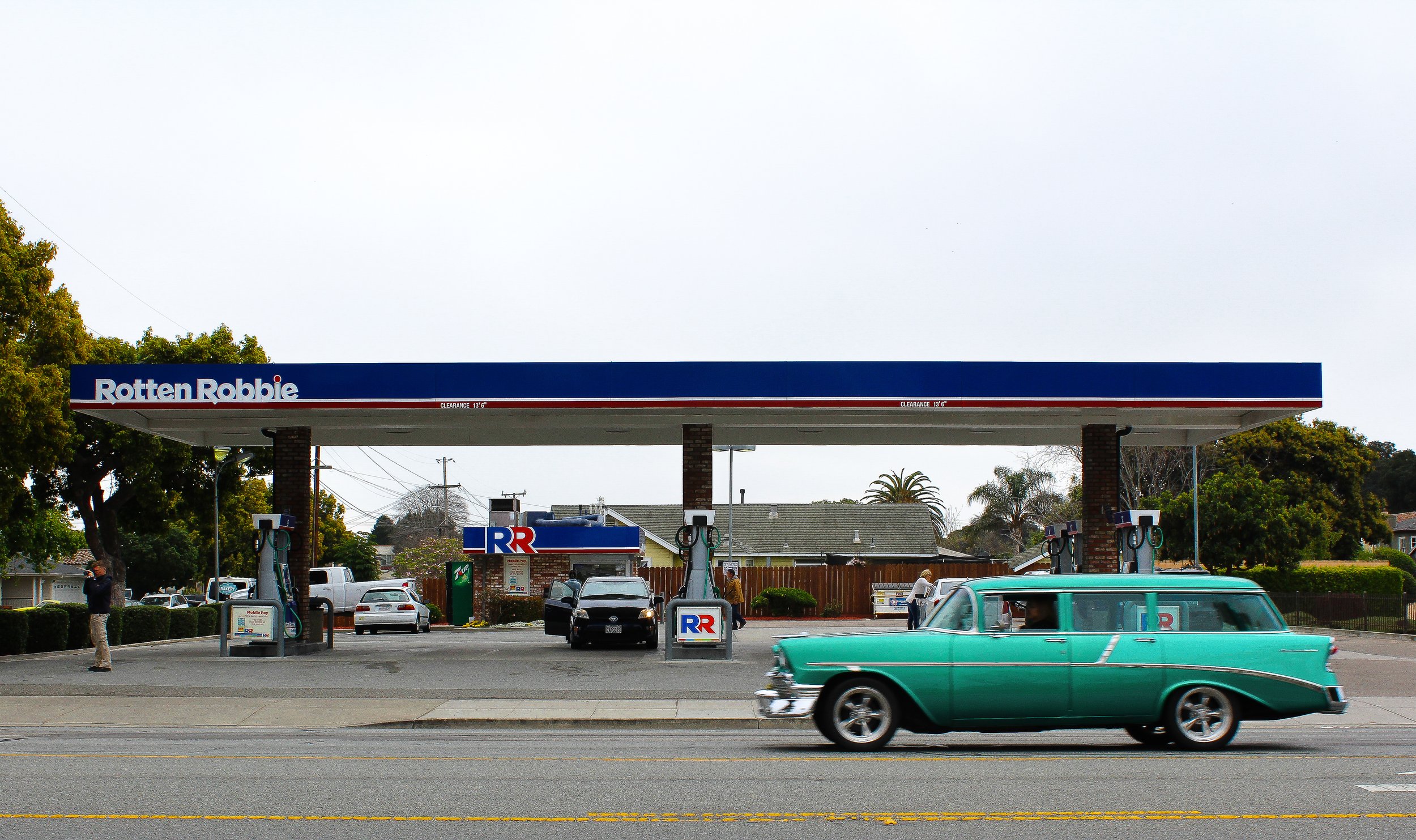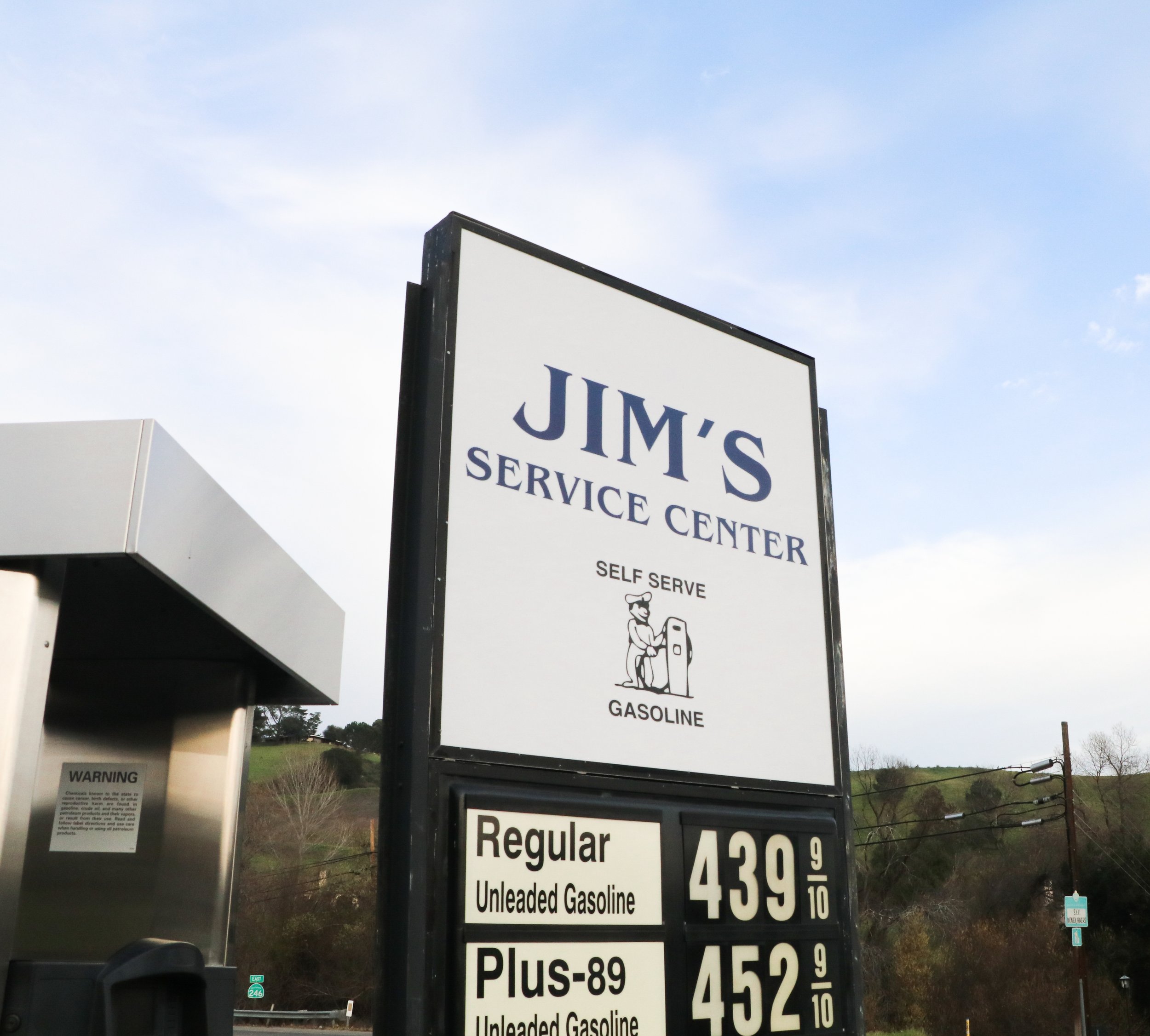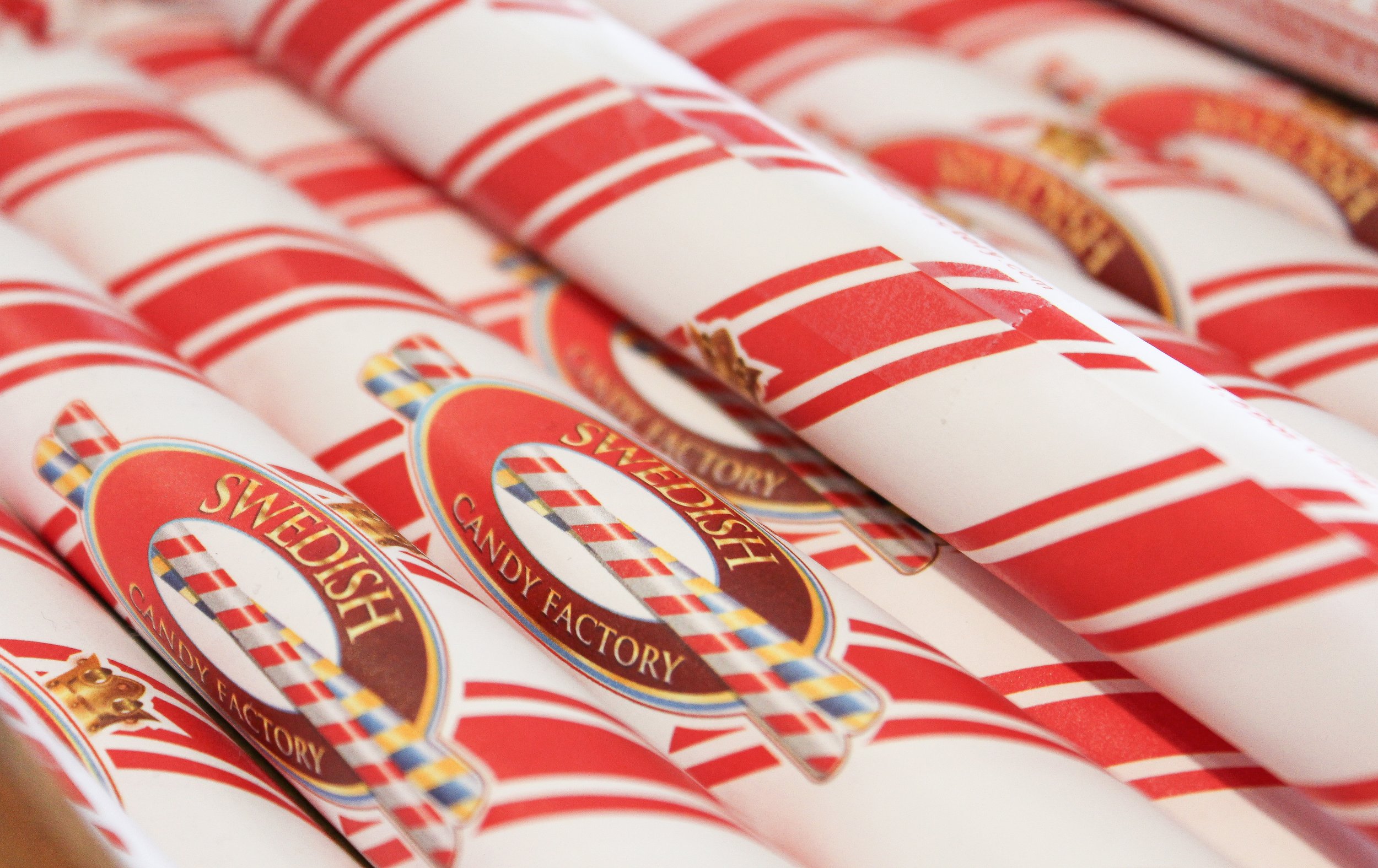The California Road Trip Issue
Simple and Sweet
On Solvang’s Gas Stations and Candy Factories
The hum of the car ebbs to a pause. Your friend pulls the vehicle in smoothly with a twist of their arm, guiding the vessel to glide into the nearest nozzle. The engine clicks, and the lever is shifted to park. You yawn and stretch, letting your arms and legs extend as far as they can until they meet with the fuzzy fibers along the inside roof of the car. You exclaim and huff, “I’m going outside for some fresh air.”
Traveling along the road to our destination, the occasional pause in the journey is really quite nice, rejuvenating even, and brings a fresh perspective to the destination. Besides the obvious notion of the replenishment of fuel, gas stations provide a pause on the drive to the destination. It’s a place for one to reset, to shake out sore limbs, to take a deep breath outside, and, most importantly, to stock up on snacks.
I decided to prove this theory at Jim’s Service Center in Solvang, California. The family-owned gas station is currently run by Chris, one bashful man whose father and grandfather (both named Jim) operated the shop before him. In the past, this gas station has not always been self-serve; its owners used to serve customers at the turquoise tanks. By having a fully operational auto service center connected to the station, they provide weary travelers a place of refuge for their vessels of comfort to be tweaked and looked at.
The station’s retro feel and lack of an overhang exposes beautiful blue skies that match the color of the tanks. I’m transported back to the olden days when gas stations were affiliated with auto repair shops, complete with the roars and revs of muscle and antique cars. It is a tribute to the days of soda fountains, oil cans, and telephone booths — a moment frozen in time down the block of the buoyant main street of Solvang.
Chris is an interesting fellow indeed. We inquire about the types of people he’s seen, and he comments, “Solvang is very cool and robbery is very low,” all while awkwardly darting his eyes around. He rambles on about the crazy amount of people he’s seen come in and out of the station — from returning customers to frantic new travelers searching for the nearest place to grab gas before heading to the main town. Nodding and smiling tentatively, he is the perfect person to see after a tense and cranky ride through the winding roads, helping to defuse and let steam out of the pressure cooker of a crowded car.
Gas stations provide the stoic faces that we see all throughout our travels, never breaking character. Their continuity and commonality bring us a sense of comfort and a welcome transition to the next stop on our road trip. Everyone forgets their squabbles as the car rumbles to a halt. We take it as time to rethink, situate our thoughts and feelings, and come back refreshed, ready to battle. As our lovely friend Chris remarks, “Gas stations are convenient for everyone.”
Polkagris is the Swedish term for “dancing pig.” The Swedish dance, the polka, involves a swirling of feet and music and sounds, twisting and turning this way and that, evoking the candy that has taken after its name. And indeed one may feel like dancing after indulging in this delectable candy. In many ways, this “dancing pig” is representative of the light and fantasy that emanates from one special shop: The Swedish Candy Factory in Solvang, California.
From the street, we see a looming coral castle, arched and accentuated by sage ridged roofs, inviting travelers to explore the fantastical candy shop. A bell chimes as I eagerly step inside, the aroma of fruit and melted sugar tempting and seducing the nose. Cheerful smiles from workers donning colorful outfits and personas match the lively composition of the shop.
One of the lady workers introduces the story of polkagris as a succulent striped candy that has been conjured up thanks to a woman named Amalia Erikkson from Sweden. She decided to create this candy because the properties of peppermint oil cured her daughter from the flu. It is known as the “original candy cane,” a cross between the flavor of peppermint and the texture of salt water taffy. After explaining the history, the woman excitedly gestures at the trinkets around the store that establish Swedish culture.
Gnomes play a huge factor in Swedish tradition; we see these silly fellows brandished all throughout the store to ensure the Swedish spirit is alive and protected. Decorative birdhouses, crafted expertly by the father of the owner, perch around the white ledges of the shop. This “mom and pop” touch draws in the attention of bustling, bushy-tailed, bright-eyed tourists, following the pull of their kid’s hand to view the curious colors and toys that make up one’s childhood.
Bob, head baker of the factory, uses his speed and endurance to twist and shape the polkagris from the morning until the evening. With a wide glass window facing the street, passersby can get a glimpse of the man in action, twisting and pulling the candy wax and adding in its beautiful colors and flavors. He kindly offers sample flavors of root beer, peach, and mango to awed onlookers, enticing their sweet tooths and keenly answering their questions.
It is simple what the magic of candy — especially this mouthwatering polkagris — can do for the soul. The interactive and delicious experience keeps tourists coming back for more. The repeat customers prove that the genuine workers really contribute to the popularity and success of the shop — the inside is just as beautiful as the outside.
Words: Catherine Chu
Photos: Niko Frost, Shayla Madha







